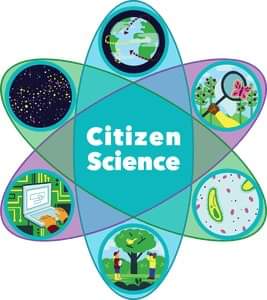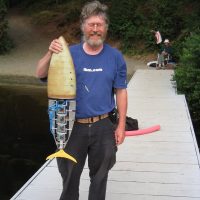My article on Citizen Science Double Blind Testing got published in a medical journal yesterday. It could start a revolution to bring science to evaluate supplements and vitamins. I’m thrilled to help! This is a modified version for the Elephant Journal.
Citizen Science Double Blind Testing
By Ian Faulkner
(This is an updated version for the Elephant Journal, Published May 8, 2019 in the “Narrative Inquiry in Bioethics: A Medical Journal)
I write articles for the Elephant Journal magazine about health issues under the name Ian Faulkner. Normally double blind studies, in which both the participants and researchers don’t know who is receiving a particular intervention, are only attempted by corporations who can afford the testing. Thus the subject matter tested needs to relate directly to profitable products that the corporation paying for the study needs to sell. As a result, simple health solutions involving inexpensive supplements rarely received double blind testing.
I have written a number of health-related articles and get a lot of feedback from other people experimenting with health concepts.
Using supplemental boron to mitigate arthritis is a good example. It is easy to use, inexpensive and very effective. Yet it does not get properly tested because there is no profit in it for pharmaceutical corporations. For myself, I have suffered from arthritis since I was 23. I was born in 1949. By 2010, I could not walk a few blocks without great pain in my feet and hips. I read accounts that in Australia the use of boron for arthritis was discovered in about 1968 and that many cases of arthritis just disappeared when 9 milligrams per day of boron was added to the diet. I tried it out and within 3 months I was almost completely cured of arthritis.
At the University of Victoria in Mechanical Engineering, we have a club whose members have tried boron supplements to treat arthritis. It worked very well for several of us who tried it. Of course, this is not a real study but it did prevent suffering in our group. It seemed to work in about 80% of cases. I wrote an article about boron and arthritis in the Elephant Journal. You can read the details by searching for “Ian Faulkner” at the magazine Elephant Journal.
This simple solution has never been subjected to double blind studies because there is no profit in it. In the process of answering letters from readers on health solutions, it has been suggested by several readers that we could easily build a simple double blind testing system on the internet. It would take only a small team to carry out a large double blind study using the following method:
Boron in a Citizen Science Double Blind Study
1. Experimentation is carried out using boron in the form of borax. The element boron is a good example to test. Borax (sodium tetra-borate) is known to have almost the same toxicity as table salt. It was used in Australian hospital studies in the 1960s.
2. The participants in the study are part of a club, which agrees to self-experiment, knowing the risks. This eliminates the need for an ethics committee approval.
3. Samples of a boron supplement and a placebo are prepared by volunteers. 9 milligrams of boron are contained in the active capsules whereas a neutral substance such as sugar is placed in the placebo capsules. Three months of pills fill each sample bottle.
4. A number coding system on the bottles distinguishes boron from the placebo.
5. A second group of volunteers mails out the samples, along with a record of what number code was associated with the bottles. These volunteers do not know the number coding system. They send the samples to a third set of volunteers, the participants of the study.
6. A third group of volunteers, the participants in the study, receive the samples and participate in the study by taking one capsule a day for 3 months. Research to date from Australia shows that it takes 3 months or less to see results depending on age. It is therefore known that a 3-month study is sufficient.
7. After 3 months, software such as “Survey Monkey” is used to run a survey on the participants of the study. Questions are used to evaluate health effects.
8. Finally, the results are analysed comparing the participants known to have used the placebo vs. those who were known to have used boron.
This kind of study is very inexpensive to do. It does not have an ethics committee because all participants are part of a club who are interested in the study. It is their own study and thus it is not an ethics issue. Only very safe substances are offered for testing in this way.
A citizen science research project like this has a number of advantages over conventional medical research. It’s very, very inexpensive to do, and it eliminates the complexities of an ethics committee. Studies can be carried out on inexpensive supplements, which have a huge effect on health but have no profit potential for a corporation. Currently, these kinds of supplements rarely get tested at all.
Typical Cost Analysis for a Citizen Science Study
In conventional double blind testing, the participants are sometimes paid to be part of the study. Alternatively, the pharmaceutical company pays for study with assistance sometimes from government agencies.
In Citizen Science-driven studies through a club, the participants each pay for their own costs in the form of a yearly club membership. Tests with 250 participants could be carried out for only a cost of $30 per participant. Each participant in the club would pay for the cost of themselves to be part of the experiment. In the case of boron, one could use borax measured out using small cocaine type balances. This equipment is very accurate and costs less than $30 for the balance and they can be purchased in drug paraphernalia stores. Alternatively, you could purchase commercially available boron capsules and repackage them in a generic bottle. For the placebo, just purchase the same size empty capsules and fill with sugar. Borax was used in the original studies in Australia, and it is very inexpensive. $30 is enough to cover the cost of the borax or the placebo plus the mailing of the bottle to the participants. It is enough to pay for the measuring equipment to fill the capsules. (A university researcher might volunteer to oversee the method of filling the capsules.) In this way studies of any magnitude could be carried out without the need for industry or government-based funding.
Ethics committees are not part of a Citizen Science study since everyone is part of a club. Only very safe supplements are tested. University or High School level researchers who are part of the club can oversee the process to deal with quality control in the preparation of the substance and the placebo. It is not “rocket science” to fill the capsules with a known amount of boron. The placebo substance could be granulated sugar. A few milligrams of sugar are not significant on a daily basis.
Using these methods, studies can be carried out that have a scientific significance and could be carried out by clubs of citizens who are interested in improving community health. The Safety of Boron in Human Studies This is just one substance that lends itself to this testing. In the EU there are attempts by the pharmaceutical industries to demonize boron by claiming it is mutagenic. However, the evidence is based on adding boron to tissue cultures and observing DNA damage. Such research was discredited in the late 1960s when it was used initially to scare people away from LSD by claiming it caused chromosome damage in 1968! The next year it was discovered that any substance causes DNA damage when added to tissue cultures. The 2015 Nobel Prize on the DNA repair mechanism of all organisms shows why no DNA errors are found in actual organisms. Boron is regarded as perfectly safe in North America, where it has been used as a laundry brightener for several hundred years without any noticeable negative health effects. In addition to treating arthritis, there is research showing boron prevents cancer. That is another study that could be carried out on boron using a similar approach.
Radiation Hormesis in a Citizen Science Double Blind Study
I run the website called “Radiation-Hormesis” (which you can search for and read) where researchers donate articles of interest. There is a research library, which offers many papers on the benefits of low dose nuclear radiation. A Canadian medical journal speaks of this alternative treatment for cancer through boosting the DNA repair rate by low dose exposure therapy. It is listed on my website.
Uranium glass beads (2%) can be purchased easily online from multiple sources. They have been popular since the mid-1800s since they glow under UV light. Hippies wore them in the 1960s. Because the levels of radioactivity from uranium glass are so low, there are no regulations on uranium glass beads worldwide of any kind. There are no ethical issues about wearing them since the radiation levels are so low (less than 10 microsieverts/hour). This is high enough to boost immunity to colds and flu. A double blind study would be very easy. Supply the subjects with beads that are in the form of a necklace near the thymus gland. Half of the necklaces would have ordinary beads and half would be supplied with uranium glass beads.
A study lasting for a year would be done using “survey monkey” to compile the results using a similar method as is described above. This is an interesting issue because I know a researcher from a Canadian university who was not allowed to do a similar study because the ethics committee believed in the danger of low dose radiation whereas we now know, due to the Nobel Prize of 2015 in chemistry, that the DNA repair mechanism makes this work completely safe. The ethics committee at the university was made up of old-timers who believed that the tiniest dose of radiation was carcinogenic. Yet the same study run by an amateur science group would have no ethics issues at all.
Please feel free to comment on these ideas at [email protected]
#doubleblind #citizenscience #naturalcures #herbs #wholistic #wholisticmedicine #traditionalmedicine #doubleblindtesting












Read 0 comments and reply